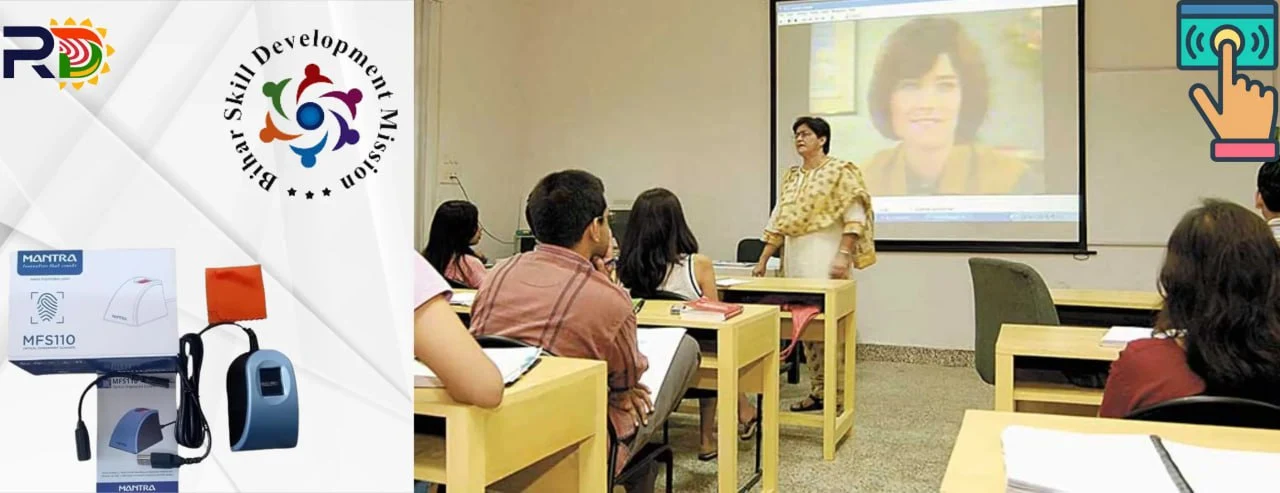
Simplifying Bihar's Biometric Attendance System for Skill Development Centers
Streamlining Attendance Tracking: A Comprehensive Guide to Bihar's Biometric System for Skill Development Centers
Introduction:
Welcome to our in-depth exploration of the Aadhaar Enabled Biometric Attendance System (AEBAS) implemented by the Bihar Skill Development Mission (BSDM). In this comprehensive guide, we'll delve into the intricacies of AEBAS, breaking down its purpose, advantages, technical requirements, and how it functions in simple terms.
Understanding AEBAS:
At its core, AEBAS is a sophisticated attendance monitoring system that leverages biometric technology, specifically fingerprint or iris scans, to record attendance in real-time. Developed by the Government of India, AEBAS utilizes Aadhaar numbers issued by the Unique Identification Authority of India (UIDAI) to authenticate individuals. This system plays a crucial role in enhancing punctuality and productivity, particularly in government institutions and skill development centers (SDCs) under BSDM.
Purpose of AEBAS:
The primary aim of AEBAS within BSDM is to streamline attendance tracking for learners and learning facilitators across various skill development centers. Historically, attendance recording relied on manual methods or basic biometric devices, leaving room for inaccuracies and tampering. AEBAS addresses these shortcomings by providing a reliable, tamper-proof mechanism for monitoring attendance in real-time. This ensures transparency, accountability, and ultimately enhances the quality of skill training programs.
Advantages of AEBAS:
AEBAS offers numerous advantages over traditional attendance tracking methods:
1. Platform Compatibility: It supports various platforms, ensuring accessibility for all users.
2. Centralized Functions: AEBAS centralizes attendance data, simplifying management and analysis.
3. Real-time Tracking: Attendance records are updated instantly, allowing for timely interventions.
4. Time Efficiency: The system saves time by automating attendance processes.
5. Real-time Notifications: Users receive instant notifications regarding attendance status.
6. Accurate Tracking: AEBAS accurately records login and logout times, facilitating precise timekeeping.
Executive Summary:
BSDM, in collaboration with the Labour Resources Department, Government of Bihar (GoB), has decided to implement AEBAS across all empaneled Skill Development Centers. This initiative aims to enable learners, learning facilitators, center coordinators, and owners to register attendance using their fingerprints, authenticated online against UIDAI's biometric database. The installation of AEBAS will be facilitated by the IT Department, GoB, ensuring uniform adoption across SDCs.
Understanding AEBAS Architecture:
AEBAS architecture comprises several components, including:
1. RD Device Registration: SDCs must register their biometric devices with RD services to enable Aadhaar-based authentication.
2. Biometric Device Data Upload: SDCs upload biometric device data through the Web-based Offline Registration Mechanism (WORM) on the SOLAR platform.
3. Technical Requirements: These include compatible biometric RD devices, Windows-based computers with the necessary software, and reliable internet connectivity.
Deployment Requirements:
To implement AEBAS successfully, both non-technical and technical requirements must be met:
1. Non-technical Requirements:
- Appointment of a Nodal Officer within the department.
- Web portal for SDC registration and Nodal Officer identification.
- Aadhaar cards for learner and learning facilitator registration.
2. Technical Requirements:
- AEBAS-compatible biometric RD devices.
- Windows-based computers with the required software.
- Internet connectivity with sufficient bandwidth for RD devices.
Conclusion:
AEBAS represents a significant advancement in attendance tracking within the BSDM framework. By leveraging biometric technology and Aadhaar authentication, it ensures accurate, tamper-proof attendance records in real-time. This not only enhances operational efficiency but also fosters transparency and accountability across skill development centers. Moving forward, continued support and investment in AEBAS will be essential to maximize its benefits and drive the success of skill development initiatives in Bihar.
Frequently Asked Questions
What should I do if my current biometric device is not working?
If your current biometric device is not functioning properly, you can purchase a new device from the market. We recommend the Mantra MFS100 device.
What is RD Service Registration?
What if I purchase a new biometric device with RD service registration?
Can I upload more than one device on WORM?
Can we register a biometric device from websites other than SERVICO?
There are multiple online RD service registration providers available. We recommend RD Service India for the MFS100 device/MFS110, but you can purchase services from any provider in the market.